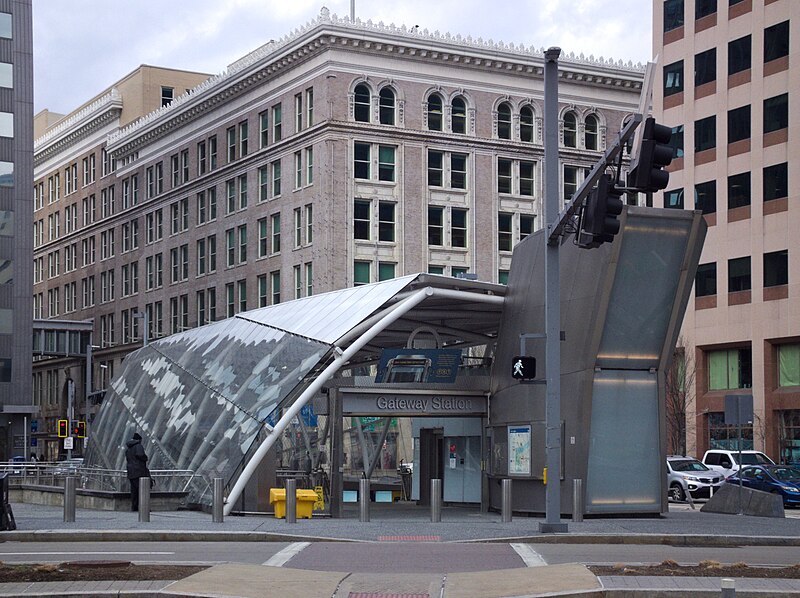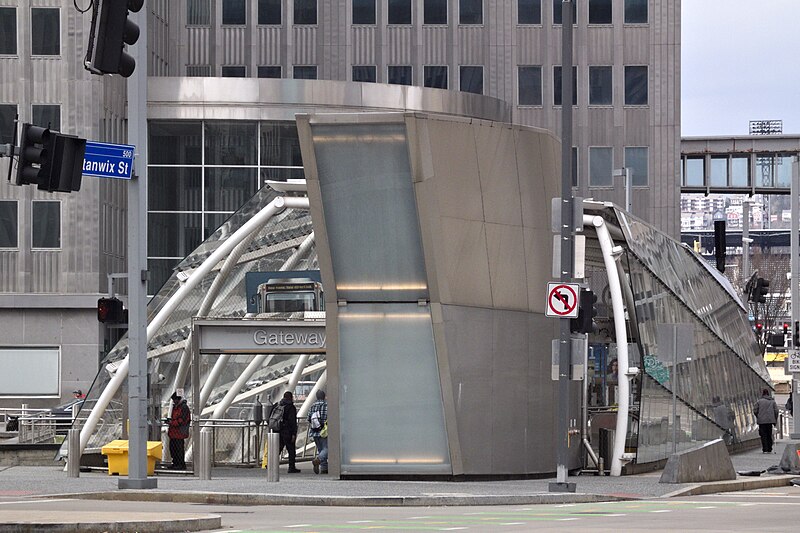
Two 4300-series CAF cars pass at Fallowfield station in Beechview.
A two-car Blue Line train comes in from Wood Street and heads out under the Allegheny to North Side; a Silver Line car departs for Wood Street. You can see the video at full resolution on its Wikimedia Commons hosting page.
The video is obviously hand-held. There are some very sophisticated video-stabilizing algorithms in our video-editing software, but the parade of identical square windows in a moving trolley makes them panic and jiggle the picture all over the screen, so we give you the video without stabilization.

The interior of a 4200-series Siemens car. These were the “LRVs” (for “light-rail vehicles,” which is better than “trolleys” or “streetcars” because it has three more syllables) that were ordered in the 1980s when the subway was built, and then refurbished to match the new 4300-series cars from CAF.



Architect Rob Pfaffman gave us just about the most whimsical subway entrance old Pa Pitt has ever seen, and he has been places and seen things. The whole station is unique, above and below the ground. There are no right angles, or at least very few. Yet from a practical point of view, nothing is confusing, and the station works very well for its intended purpose, which is to get us into a trolley quickly.


Steel Plaza was designed in the 1980s, and its architecture is an interesting combination of Brutalist and Postmodern styles—the two most prominent materials are raw concrete and polished granite. It was built as a junction station, where the main subway line met the spur to Penn Station, which is not in regular service these days. In the picture below, the main line is on the left, and the spur is on the right.



